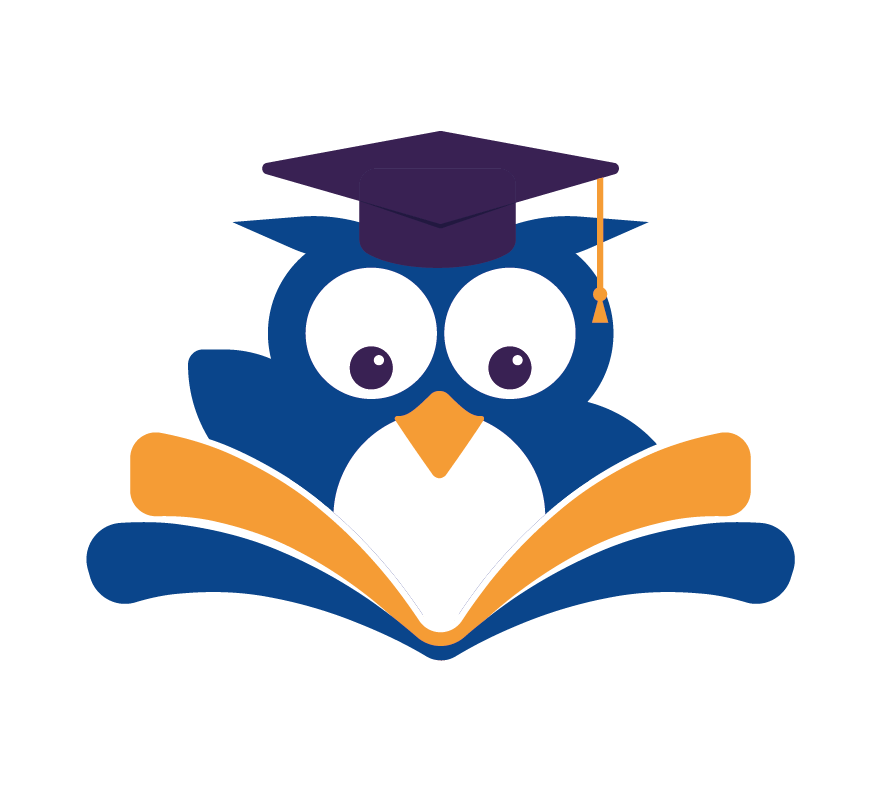Are you ready to unlock your full potential and achieve your learning goals? Setting effective goals is the first step towards educational achievements that can change your life. By understanding the importance of goal setting for success, you can open new doors and reach new heights.
We will show you how to create a roadmap to learning outcomes that matter. Whether you’re a student or a lifelong learner, our insights will keep you motivated and focused on your goals.
Key Takeaways
- Understand the significance of setting high-quality growth goals.
- Learn how to overcome limiting beliefs that hinder your progress.
- Discover practical strategies for achieving educational achievements.
- Explore effective methods for setting and reaching your learning goals.
- Gain insights into maintaining motivation and focus on your objectives.
Understanding the Power of Learning Goals
Setting clear learning goals is more than planning your academic path. It’s unlocking your full potential. Learning goals motivate and guide your efforts towards academic success.
The Science Behind Goal-Setting and Learning
Research shows that specific, challenging goals lead to better achievement. But why is goal-setting so effective? It’s because our brains respond to goals in a powerful way.
How Goals Activate Brain Motivation Centers
Setting a goal fires up our brain’s motivation centers. This releases dopamine, pushing us to reach our goals. This process is key for effective goal setting in education, keeping students focused and driven.
Research on Goal Setting and Academic Achievement
Studies prove that students with clear goals do better in school. Using student success strategies like goal-setting boosts academic goal attainment.
Knowing the science behind goal-setting and learning lets you use learning goals to reach your academic goals. This knowledge is crucial for goal setting for success, helping you map out your academic journey.
Assessing Your Current Learning Situation
To reach your full potential, it’s crucial to check where you are now. Understand your strengths, weaknesses, and how you learn best. This helps you tailor your learning to meet your goals.
Identifying Your Learning Strengths and Weaknesses
Knowing your learning strengths lets you use them to your advantage. Acknowledging your weaknesses helps you improve them. Self-reflection is essential for this.
Recognizing Your Preferred Learning Style
Knowing your preferred learning style—visual, auditory, or kinesthetic—boosts your learning. Adjust your study methods to fit your style for better learning outcomes.
Evaluating Your Current Study Habits
Check your study habits to see what works and what doesn’t. Look for red flags like bad time management, disorganization, and distractions.
Red Flags That Indicate Ineffective Learning Methods
Watch out for signs like always putting things off, forgetting what you learn, and not reaching your goals. These signs mean it’s time to change your goal-oriented learning approach to hit academic milestones.
By evaluating your learning situation, you can improve your learning strategy. This leads to greater educational achievements.
How to Set SMART Learning Goals
SMART learning goals are more than wishes; they’re a clear path to your academic dreams. By making your goals Specific, Measurable, Achievable, Relevant, and Time-bound, you’re setting yourself up for success. Let’s explore how to create these goals effectively.
Making Goals Specific and Measurable
The first step in setting SMART goals is to make them clear and measurable. Goals like “I want to be better at math” are vague and hard to reach. Instead, aim for “I will improve my math skills by scoring at least 85% on the next three quizzes.”
Examples of Vague vs. Specific Learning Goals
| Vague Goal | Specific Goal |
|---|---|
| I will learn more about science. | I will read three science books this month and summarize each chapter. |
| I want to improve my writing. | I will write 500 words every day for the next two weeks and get feedback from my teacher. |
Ensuring Goals Are Achievable and Relevant
Your goals must be achievable and relevant to your needs. Setting a goal to read 10 books in a week might be too high if you’re new to reading. Start with a goal like reading one book a week. This makes your goal both challenging and reachable.
Setting Time-Bound Deadlines for Accountability
Finally, making your goals time-bound adds urgency and accountability. This means setting deadlines for your goals.
Short-term vs. Long-term Learning Deadlines
Both short-term and long-term deadlines are key. Short-term deadlines help you stay focused, while long-term deadlines give you a broader view. For example, aim to finish a chapter by the end of the week for a short-term goal. For a long-term goal, aim to complete a course in three months.
By following the SMART criteria, you create a clear roadmap for your learning goals. This structured approach not only helps you achieve your goals but also boosts your confidence as you see your progress.
Creating Your Personal Learning Action Plan
Creating a learning plan tailored to you is key to making progress in your studies. It helps you stay focused and motivated. You’ll overcome challenges and celebrate your wins.
Breaking Down Large Goals into Manageable Steps
Big goals can feel too much, but breaking them down helps. Identify the main parts of your goal. Then, make a list of tasks to reach it. For example, learning a new language might include taking a course, practicing with a partner, and using apps.

Scheduling Study Sessions for Maximum Retention
Being consistent in your studies is crucial. Regular study sessions help you move closer to your goals. Think about when and how often you study best.
The Optimal Study Session Length and Frequency
Studies show shorter, more frequent study sessions work better than long ones. Try studying for 30 minutes, three times a day. See if it fits your learning style better than longer sessions.
Allocating Resources and Materials Effectively
Having the right resources is vital for your learning goals. Think about what you have, what works best, and what you can afford.
Digital vs. Physical Learning Resources
Digital and physical resources both have benefits. Digital options like online courses offer flexibility. Physical materials like textbooks provide a hands-on experience. Mix both to find what works for you.
By following these steps, you’ll create a learning plan that helps you achieve your goals. You’ll be on your way to success in your studies.
Proven Strategies to Achieve Your Learning Goals
Achieving your learning goals takes more than just hard work. It needs the right strategies. We’ve gathered some proven techniques to boost your learning.
Active Learning Techniques That Enhance Retention
Active learning means getting involved with what you’re studying. It’s not just about reading or listening. Try The Feynman Technique, where you teach a concept to someone new.
The Feynman Technique for Deep Understanding
The Feynman Technique helps you really get complex topics. Here’s how to use it:
- Choose a concept you want to learn.
- Teach it to a child or someone new to the topic.
- Find any gaps in your explanation and go back to the material.
- Make your explanation simple and clear.
Spaced Repetition and Retrieval Practice Methods
Spaced repetition helps you remember things for a long time. It involves reviewing material at longer intervals. Retrieval practice means actively recalling information instead of just re-reading it.
| Technique | Description | Benefits |
|---|---|---|
| Spaced Repetition | Review material at increasing intervals | Improves long-term retention |
| Retrieval Practice | Actively recall information from memory | Enhances understanding and retention |
Leveraging Technology for Learning Efficiency
Today, there are many tools and apps to help you learn. From apps that use spaced repetition to planners that keep you organized, technology is a big help.
Apps and Tools That Support Goal Achievement
Some top apps for learning are:
- Anki for flashcard-based learning
- Trello for project management and organization
- Forest for staying focused and avoiding distractions
By using these strategies, you can achieve your learning goals better. Success comes from balancing technique, technology, and hard work.
Overcoming Common Learning Obstacles
The journey to reach your learning goals is not always easy. But, with the right strategies, you can get past common hurdles. You might face challenges like procrastination, distractions, and hitting a learning plateau. We’ll look at ways to beat these obstacles and keep moving forward.
Dealing with Procrastination and Distractions
Procrastination and distractions are big hurdles to learning. To beat them, you need to focus better. The Pomodoro Technique is a great way to do this.
The Pomodoro Technique and Focus Strategies
The Pomodoro Technique works in 25-minute focused blocks, followed by a 5-minute break. After four blocks, take a 15-30 minute break. It helps you stay focused and avoid burnout.
- Choose a task you want to work on.
- Set a timer for 25 minutes.
- Work on the task without any interruptions until the timer goes off.
- Take a 5-minute break.
- Repeat the cycle for a total of four “Pomodoros.”
- Take a longer break of 15-30 minutes.
It’s also key to eliminate distractions. Find out what distracts you most, like social media or email. Use tools like website blockers or find a quiet place to study.
Managing Learning Plateaus and Frustration
Sometimes, you might feel like you’re not making progress. This can be really frustrating. But remember, learning plateaus are normal.
Try changing how you learn. If reading isn’t working, try videos or hands-on activities. This can help you stay engaged and understand better.
| Strategy | Description | Benefit |
|---|---|---|
| Change Study Method | Switch from reading to videos or hands-on activities. | Increased engagement and understanding. |
| Seek Feedback | Get feedback from teachers, peers, or mentors. | Identifies areas for improvement. |
| Set Small Goals | Break down large goals into smaller, achievable tasks. | Boosts motivation and progress. |
Adjusting Goals When Circumstances Change
Life can change suddenly, and so can your learning goals. It’s important to be flexible with your goals.
When to Pivot vs. When to Persist
Knowing when to change your goals and when to keep going is key. If your situation has changed for good, it might be time to pivot and adjust your goals. But if the change is temporary, you might want to persist and find ways to work around it.
For example, if you’ve started a new job that takes up more time, you might need to adjust your learning schedule. But if you’re sick for a short time, you could persist by listening to audiobooks.

By being adaptable and resilient, you can overcome common learning obstacles and keep moving toward your goals.
Tracking Progress and Celebrating Milestones
The path to success is paved with milestones, and tracking them is key. As you work towards achieving your learning goals, monitoring your progress is essential for staying on track and motivated.
Effective Methods to Monitor Your Learning Journey
To effectively track your progress, you can use a variety of methods. Digital tools like habit trackers and learning apps can provide a convenient way to monitor your daily progress. On the other hand, analog methods such as journaling or using a planner can offer a more tactile experience.
Digital and Analog Progress Tracking Systems
Digital progress tracking systems, such as apps and spreadsheets, allow for easy data entry and analysis. Analog systems, like notebooks and sticky notes, provide a hands-on approach to tracking. You can choose one or a combination that suits your student success strategies.
The Importance of Reflection in the Learning Process
Reflection is a critical component of the learning process. By regularly reflecting on your progress, you can identify areas for improvement and adjust your goal setting for success strategies accordingly.
Rewarding Yourself to Maintain Momentum
Celebrating your milestones is crucial for maintaining momentum. Meaningful rewards can reinforce positive learning habits and motivate you to continue striving towards your goals.
Meaningful Rewards That Reinforce Learning Habits
Choose rewards that are meaningful to you, such as a favorite meal, a fun activity, or a relaxing break. These rewards will help you stay motivated and engaged in your learning journey, ultimately helping you achieve your learning goals through effective goal setting in education.
Building a Supportive Learning Environment
Creating a supportive learning environment is key to reaching your educational goals. A well-organized space can greatly boost your ability to hit academic milestones and better your learning outcomes.
Creating the Ideal Physical Study Space
Your study area should be comfy, quiet, and free from distractions. Think about environmental factors like lighting, temperature, and seating when setting up your space.
Finding Accountability Partners and Study Groups
Being part of a study group or having an accountability partner can give you motivation and support. You can swap resources, talk about tough topics, and learn from each other.
Communicating Your Goals to Gain Support
Telling others about your goals can keep you on track. When you share your goals, you get support and encouragement from those around you.
How to Ask for Help Without Compromising Independence
It’s fine to ask for help when you need it. Be clear about what you need, and don’t hesitate to ask teachers, classmates, or mentors for advice.
Conclusion: Transforming Goals into Lifelong Learning Habits
As we finish our journey to reach your learning goals, it’s key to turn these goals into lifelong habits. This way, you can keep moving forward and keep improving in your studies.
We’ve looked at many ways to succeed in learning, like setting SMART goals and making a supportive study space. Setting goals in education isn’t just about reaching a certain point. It’s about growing and learning all your life.
To keep going, it’s important to think about your learning often. See what’s helping you and what you need to work on. This helps you change your approach when needed and keeps you moving towards your goals.
By adopting these habits, you’re on the path to reaching your learning goals and making lasting achievements in education. We believe in you and know that with hard work and dedication, you’ll do great things!

